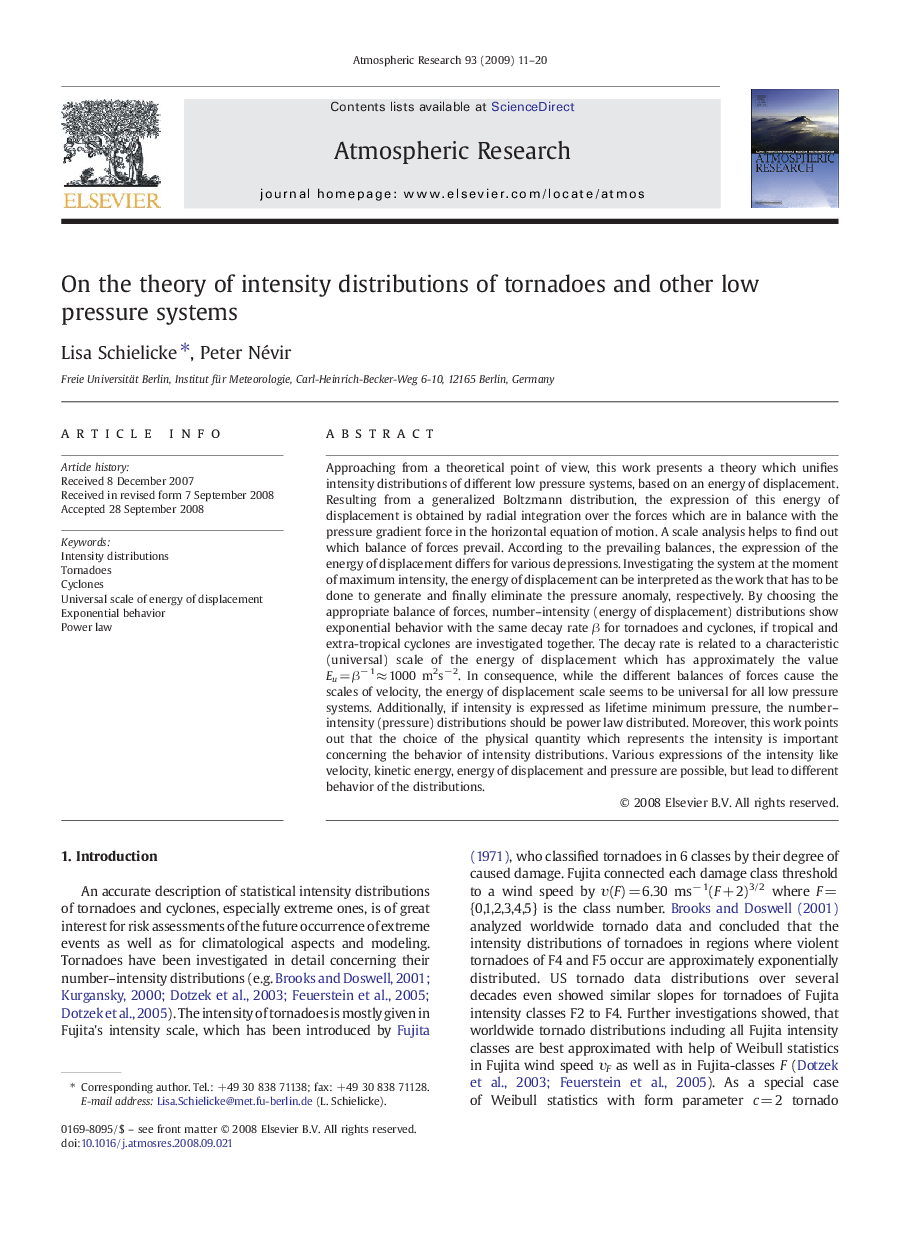| Article ID | Journal | Published Year | Pages | File Type |
|---|---|---|---|---|
| 4450700 | Atmospheric Research | 2009 | 10 Pages |
Approaching from a theoretical point of view, this work presents a theory which unifies intensity distributions of different low pressure systems, based on an energy of displacement. Resulting from a generalized Boltzmann distribution, the expression of this energy of displacement is obtained by radial integration over the forces which are in balance with the pressure gradient force in the horizontal equation of motion. A scale analysis helps to find out which balance of forces prevail. According to the prevailing balances, the expression of the energy of displacement differs for various depressions. Investigating the system at the moment of maximum intensity, the energy of displacement can be interpreted as the work that has to be done to generate and finally eliminate the pressure anomaly, respectively. By choosing the appropriate balance of forces, number–intensity (energy of displacement) distributions show exponential behavior with the same decay rate β for tornadoes and cyclones, if tropical and extra-tropical cyclones are investigated together. The decay rate is related to a characteristic (universal) scale of the energy of displacement which has approximately the value Eu = β− 1 ≈ 1000 m2s− 2. In consequence, while the different balances of forces cause the scales of velocity, the energy of displacement scale seems to be universal for all low pressure systems. Additionally, if intensity is expressed as lifetime minimum pressure, the number–intensity (pressure) distributions should be power law distributed. Moreover, this work points out that the choice of the physical quantity which represents the intensity is important concerning the behavior of intensity distributions. Various expressions of the intensity like velocity, kinetic energy, energy of displacement and pressure are possible, but lead to different behavior of the distributions.
